With wokism, cancel culture, and CRC sweeping across the country, the Stars and Stripes should be a unifying symbol. As former President Trump, who was born on Flag Day, often said during his four-year term, “We are one people, with one destiny. We all bleed the same blood. We all salute the same flag.”
Flag Day 2023 falls on Wednesday, June 14th. It commemorates the adoption of the flag of the United States, which happened 246 years ago on June 14, 1777, by resolution of the Second Continental Congress: H
“Resolved: that the flag of the United States be made of thirteen stripes, alternate red and white; that the union be thirteen stars, white in a blue field, representing a new Constellation.”

I Pledge Allegiance to the flag of the United States of America and to the Republic for which it stands, one Nation under God, indivisible, with liberty and justice for all.
The holiday of Flag Day had a very rough start. In 1861, at the beginning of the Civil War, George Morris persuaded Hartford, Conn., to undertake a patriotic celebration on behalf of the Union. But the concept didn’t catch on, there or elsewhere.
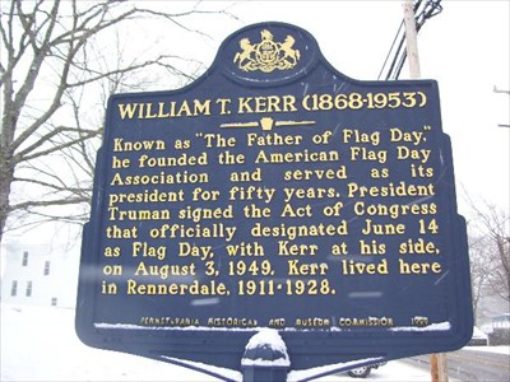
1888, William Kerr, son of a Civil War veteran, founded the American Flag Day Association of Western Pennsylvania, pressing presidents and legislators to make Flag Day official. In his hometown of Rennersdale, near Pittsburgh, a historical marker honors Kerr as the “Father of Flag Day.”
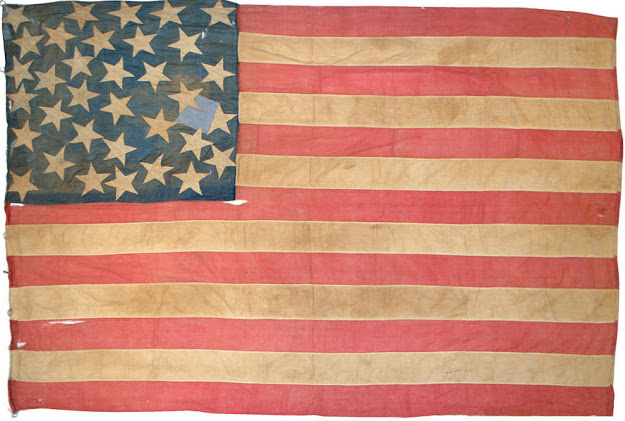
American Flag 1861
Still, Flag Day struggled for official recognition. It wasn’t until 1916 that President Woodrow Wilson issued a wishy-washy proclamation to “suggest and request. . . If possible” that people observe Flag Day. Ha\\
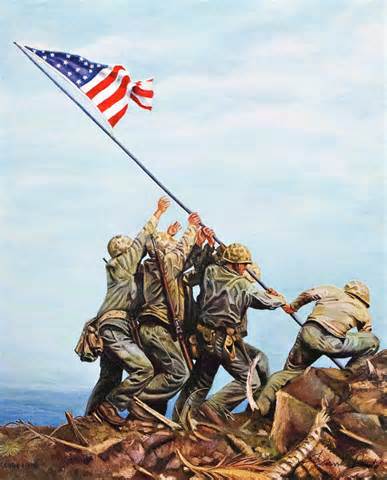
Today saluting the flag or even being patriotic seems corny or jingoistic to some. Some even say it’s racist. But when America is challenged, we pull together. Old Glory has always been a rallying point for all Americans in the face of horror. It has helped us deal with national tragedies after 9/11; It unified the country after the Boston Marathon bombing, for one day, everyone, even New Yorkers, cheered the Red Sox:
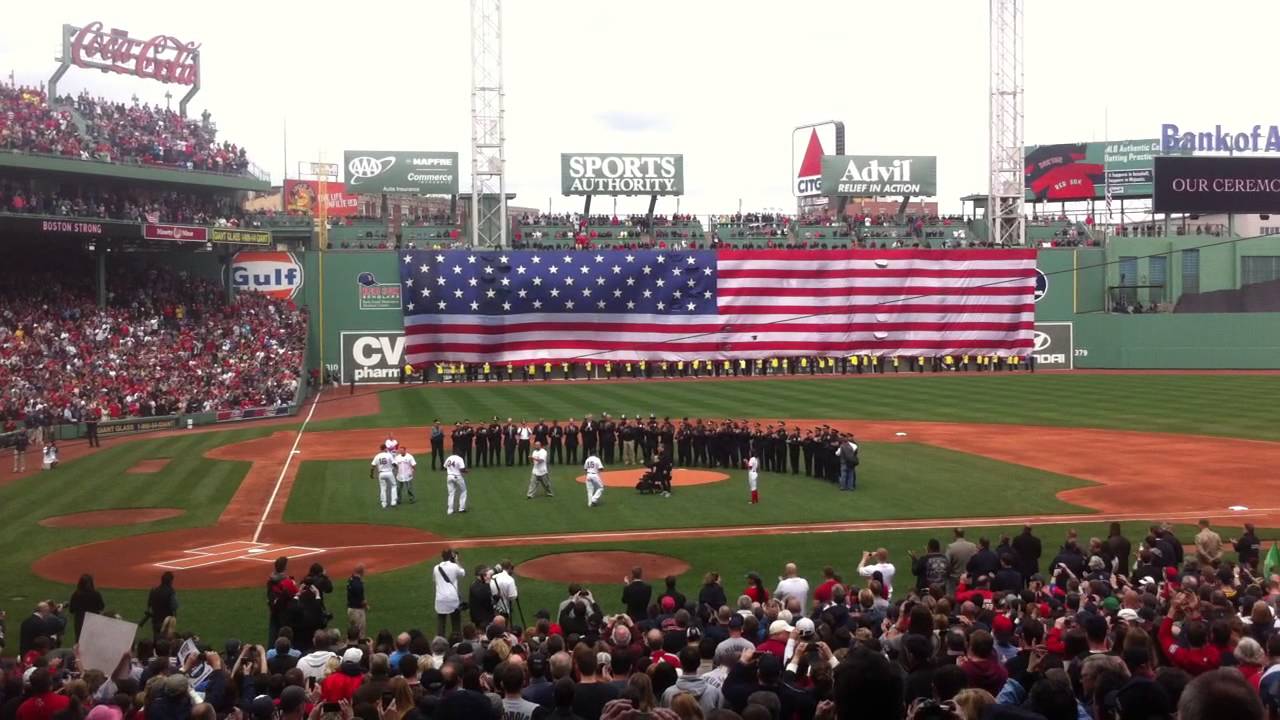
Speaking as a New Yorker, we did go back to hating the Red Sox the next day…but that’s baseball.
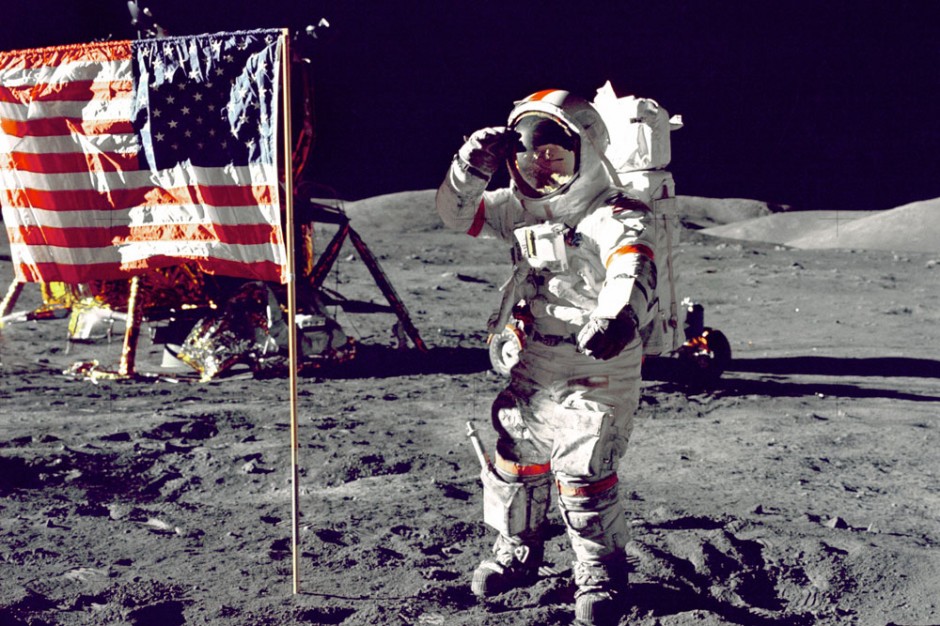
Do you believe in miracles?

“The flag is a visible symbol of the ideal aspirations of the American people. It is the one focus in which all unite in reverential devotion. We differ in religion; we differ in politics; we engage in disputes as to the true meaning of the Constitution, and even challenge the wisdom of some of its provisions; we inject self-interest and cupidity into most of the ordinary transactions of daily life, but through the sanctifying folds of the flag, the collective intelligence of the nation rises superior to the wisdom of its parts, and thus ensures the preservation of the Republic.” U.S. General Arthur MacArthur 1903
Eleven Things You May Not Know About the American Flag:
7. Which flag had the snake on it? You’ve probably seen the yellow flag with a coiled rattlesnake and the motto “Don’t Tread On Me.” This is the Gadsden flag, named after its designer, General Christopher Gadsden. The flag was used in the Revolutionary War. There are other flag variations with rattlesnakes and versions of the motto. Benjamin Franklin was one of the originators of the snake as an American political symbol in a famous 1754 political cartoon.
8. Where was the first flag flown outside the U.S. in military action? It was first flown over the shores of Tripoli. The Marines were involved in military operations against the Barbary pirates (and weren’t called Islamophobic). After the Marines hit the sand, they raised the Stars and Stripes. Then, after the Battle of Derne in 1805, the flag was raised on foreign soil for the first time after a battle.
9. What is Francis Scott Key’s flag connection? Key witnessed the American flag flying after a British attack on Fort McHenry in Baltimore in 1814 while he was a guest on a British ship as he negotiated for the return of American prisoners. His experience inspired him to write a poem, “Defence of Fort McHenry.” After it was published, Key matched it with music from a popular British tune, which eventually became “The Star-Spangled Banner,” our national anthem. By the way, if “vexillology” wasn’t enough fun, here’s another one: the act of adding new lyrics to an existing song is called “contra factum.”
10. What’s the largest American flag? It’s so big you can’t fly it, but the “Super flag” conceived by the late Thomas Demski measures 505 by 225 feet and weighs 3,000 pounds. It takes 600 people to unfurl. Each star is 17 feet high. Bonus fact: The National Constitution Center in Philadelphia has its giant American flag on display in its Grand Hall Overlook, surrounded by the flags of all the U.S. states and territories and with the iconic Independence Hall in the background. The flag was flown over the capitals of all 50 states and was hung by Muhammad Ali in a special Flag Day ceremony on June 14, 2003, when the museum opened.
11. How was the 50-star flag designed? In the 1950s, when it seemed inevitable that Alaska would be admitted to the Union, designers began retooling the American flag to add a 49th star to the existing 48. Meanwhile, a 17-year-old Ohio student named Bob Heft borrowed his mother’s sewing machine, disassembled his family’s 48-star flag, and stitched 50 stars in a proportional pattern. He handed in his creation to his history teacher for a class project, explaining that he expected Hawaii would soon achieve statehood as well. Heft sent the flag to his congressman, Walter Moeller, who presented it to President Eisenhower after both new states joined the Union. Eisenhower selected Heft’s design, and on July 4, 1960, the president and the high school student stood together as the 50-star flag was raised for the first time. Heft’s teacher promptly changed his grade from a B- to an A.
As the Constitution says, our government was created “In Order To Form A More Perfect Union,” Of course, no one can ever claim that the United States is perfect. Still, we are much closer to perfection than any other country on this planet. The Grand Old Flag represents the freedom and liberty of the United States, which is always striving to become “more perfect.” The Stars and Stripes should be honored daily, especially today, Flag Day.
A Flag Day treat–James Cagney performs a “You’re A Grand Old Flag” medley from the Movie Yankee Doodle Dandy:
















